Connie Francis, singer who made Fort Lauderdale spring break famous, dies at 87
Published in Entertainment News
MIAMI — Connie Francis, the international pop singer who put Fort Lauderdale on the musical map with her spring break standard “Where the Boys Are” and who had an unexpected career resurgence at 87 with a song she’d forgotten she recorded, died Wednesday night.
The “Pretty Little Baby” singer, who lived in Parkland, was hospitalized on July 2 for what she said on Facebook was “extreme pain.” She’d had recent hip surgery. Her death was announced on Facebook by her friend Ron Roberts, the president of her boutique label Concetta Records, and shared to her page. A cause wasn’t released.
In June, weeks before her hospitalization, Francis was honored at her South Florida home by record label executives from Universal, which confirmed her death on Thursday, for the TikTok-fueled success of the perky “Pretty Little Baby” tune that captured the world’s attention via billions of streams on the social media platform and other sites.
Astounding career resurgence
“It’s astounding to me that a song I recorded 63 years ago would resonate with teenagers and younger,” Francis said from the foyer of her South Florida home. “I’ve seen videos with children 2 years of age singing the song. Adorable. And it’s just astounding to me. But it’s real.”
Francis’ honeyed mezzo-soprano inspired a generation of pop singers, including ABBA’s Agnetha Fältskog, who Francis recently praised on social media, and Broadway’s Gracie Lawrence, who was Tony-nominated for playing Francis in the new Bobby Darin bio musical, “Just in Time.” She also introduced a generation of teenagers to pop music in her heyday years 1958 and 1964.
Francis’ Fort Lauderdale connection
Francis was the most popular female pop singer through her signature tunes “Who’s Sorry Now” and “Where the Boys Are,” the Neil Sedaka-Howard Greenfield title song from the 1960 comedic movie she co-starred in that was set in and filmed in Fort Lauderdale.
That frothy film and its title song, which rose to No. 4 on the Billboard Hot 100 in early 1961, put Fort Lauderdale on the spring break map — a rowdy reputation the city has distanced itself from for decades.
“She had a remarkable career in song and film, capped with her great performance in ‘Where the Boys Are,’ “ said Fort Lauderdale Mayor Dean Trantalis in an Instagram post. “That iconic movie and her role provided a tremendous boost to Fort Lauderdale’s fame in the mid-20th century and spurred tourism for decades to follow. I was honored to have known her. She will be greatly missed.”
“What struck me was the purity of the voice, the emotion, the perfect pitch and intonation,” said Sedaka, 86, in her New York Times obituary. “It was clear, concise, beautiful. When she sang ballads, they just soared.”
The pair became friends and frequent collaborators when Francis and her manager-father were looking for a follow-up single after the dreamy “Who’s Sorry Now” also crested at No. 4 on the nation’s singles chart.
Francis chuckled on the couch of her Parkland home in June when she recounted the time in 1958 she met Sedaka and Greenfield, the two young New York songwriters for hire who also needed a hit song fast. They arrived before her with a piano and a parcel full of their compositions. They kept playing Francis ballads, one after the other, in hopes of pleasing the 19-year-old singer and her taskmaster father, George Franconero.
None caught her ear.
A desperate Greenfield whispered in his musical partner’s ear. “Play her ‘Stupid Cupid,” he suggested. That one was bouncy. Different from the stately ballads that were flopping in front of her. Sedaka was aghast. A sweating Greenfield reminded a skeptical Sedaka that nothing else was working.
Francis overheard the exchange and repeated it in her June interview with the Miami Herald:
“‘She’s a classy singer. She’ll be insulted!’ So I said, no matter what it is, just play it, because you guys are putting me to sleep. So finally, Neil played it, and he played 12 bars for that song before I started jumping up and down, saying, ‘Wow! Now you’re talking hit title! Hit title! That’s my next record!” Francis said.
Recording another classic
Francis was also initially lukewarm on the ballad that brought her to the world’s attention, “Who’s Sorry Now.”
“My father liked the song,” she said. “And I said it was written in 1923. ‘Did they have records in 1923, Daddy?’ So he said, ‘The adults have already made it a hit. If you put rock and roll triplets behind it, the kids can dance to it, and you should record it.’ So with only 16 minutes left in the session, because I did three sides first, hoping we wouldn’t get to ‘Who’s Sorry Now,’ I said, ‘There’s no time, fellas. There’s no time for ‘Who’s Sorry Now.’ And my father said, ‘You’ve got 16 minutes if I have to nail you to that microphone.’ So I did it. And of course, he was right, and he was with everything except Bobby Darin,” Francis said.
Multi-language singer
Francis also pioneered the recording of her material in languages other than English for the world market.
“I was 14 years old. My father said, ‘Now that the war’s over we have to make friends with our enemies, especially Japan and Germany. If you ever do make it — and that’s a long shot — but if you ever do make it, you have to sing in those languages.’ So I did, and I had tremendous success with foreign language recordings, especially in Germany,” Francis said.
In May, the music label Universal that marketed her classics, released seven international versions of “Pretty Little Baby” with recordings Francis originally sang in English, Spanish, French, Italian, German, Japanese and Swedish.
Her most successful Top 10 albums on the U.S. Billboard chart were “Connie Francis Sings Italian Favorites” in 1959 and its 1960 sequel “More Italian Favorites.”
New Jersey beginnings
Born Concetta Rosa Maria Franconero to a New Jersey Italian American family in Newark, New Jersey, on Dec. 12, 1937, Francis started singing and playing accordion before she was in grade school. Radio and TV star Arthur Godfrey suggested she use the simpler name “Connie Francis” as she rehearsed to appear on his program, “Arthur Godfrey’s Talent Scouts,” in December 1950.
She began singing demo recordings at 14. Her first releases bombed.
Despite her reluctance to cut “Who’s Sorry Now,” the song helped make her the first major female pop star — but only after Dick Clark played the tune, which didn’t take off immediately, on his popular television music program, “American Bandstand,” on Jan. 1, 1958.
Francis was considering a scholarship offer to study medicine at New York University. “I wanted to take advantage of that to become a doctor,” she said.
She says she watched Clark on TV and hoped the singer he was talking about would have better luck than she was having with the music business. Then she heard him say her name.
“Without Dick Clark there would have been no Connie Francis,” she told the Miami Herald in June. “I knew my life would never be the same.”
Setbacks and challenges
But after an impressive string of 35 Top 40 pop singles through May 1964, the hits abruptly stopped after the middling “Be Anything (But Be Mine),” a cover of a 1952 Eddy Howard hit.
Francis and a host of other innocent and mainstream pop singers, Sedaka among them, were swept aside by British Invasion acts like the Beatles and the Rolling Stones and the Who. Next, a wave of louder and more abrasive '60s counterculture acts like Jefferson Airplane; Crosby, Stills and Nash; Janis Joplin and other Woodstock performers kept the sweet sounds of Francis and her contemporaries off radio.
By the early-1970s, self-contained singer-songwriters like Carole King, Carly Simon, Joni Mitchell and James Taylor who would come to influence Taylor Swift in the 2010s and beyond, dominated airwaves. These artists didn’t have to search for material that spoke to their generation and younger.
Francis continued performing in Vegas, in nightclubs, for the troops in Vietnam. But her career, and life, careened into tragedy when she was raped at knife-point and beaten in her room at a Westbury Howard Johnson motel in a suburb of New York on Nov. 8, 1974. She won a jury verdict of $2.5 million in her suit against the chain but decades of mental health struggles followed. At one point, she lost her voice.
In October 1983, her father had her committed to a Fort Lauderdale psychiatric hospital for treatment of manic depression after she attempted suicide. She moved between several psychiatric hospitals in Broward and Palm Beach counties for several years after, the Herald reported.
Her brother George was murdered in 1981. She married and divorced four times. Singer Bobby Darin was the love of her life, she said, but he didn’t get the chance to become her husband.
The Bobby Darin romance
The strict George Franconero did not approve of his young daughter dating the fellow rock ‘n’ roll star after the performers had met in 1956. When Franconero heard Darin had suggested the two elope after rehearsing together for an appearance on “The Jackie Gleason Show” he ran Darin out of the room with a gun he had in his pocket, Francis said.
She was driving later with her father through the Lincoln Tunnel when the radio announced Darin had wed actress Sandra Dee in 1960. Francis, heartbroken, wrote in her memoir she’d dramatically hoped the tunnel would erupt, engulfing them in waters from the Hudson River. Darin died at 37 in 1973 from a lifelong heart defect.
Finding joy in South Florida
Francis eventually found her voice and began performing again. After her father died in 1996, Francis and her mom, Ida, moved to the Parkland home she lived in until she died. She said her mom died in that home in 2000 surrounded by people she loved.
“My mother was the most giving soul,” Francis said in June while recounting a childhood memory of when the family first dealt with her newfound fame.
“We would have kids camping out on our lawn in Essex Fells, New Jersey, where we lived,” she said. “We’d have people camp outside, and my mother would feed them all day long. She would cook for them and feed them so they had enough to eat. She wanted to make sure everybody had enough to eat. She was wonderful. We had a great relationship.”
By 2010, Francis had become chairwoman of Mental Health America’s national awareness campaign.
“I don’t want to be remembered for the heights I have reached, but for the depths from which I’ve come,” Francis said at a luncheon at a Fort Lauderdale Embassy Suites, the Herald reported.
She welcomed happier times living in Broward County where she wanted to live ever since filming “Where the Boys Are” nearby.
Pretty Little Baby
Then came the “Pretty Little Baby” phenomenon by which millions posted videos using the song as a soundtrack.
Francis recorded the song in 1962. She had the foresight to record it in several languages. Still, “Pretty Little Baby” was buried on an album and was never issued as a single. She’d forgotten about it for decades.
She died knowing she was the youth-driven social media platform’s biggest star this spring and early summer when label executives, including Bruce Resnikoff, a president and CEO of Universal Music Group, honored her with a plaque at her home, which was lined with dozens of framed photographs and gold records and other mementos of her career.
“From breaking barriers as the first female singer to top the Billboard Hot 100 in 1960, to going viral on TikTok at 87 with her infectious song ‘Pretty Little Baby,’ Connie Francis led a truly extraordinary life,” Resnikoff said in a statement Thursday. “She gave the world countless, timeless songs and inspired generations with her voice, resilience and trailblazing spirit. We are deeply saddened by her passing, but take comfort in knowing how joyful and fulfilled she felt in these last few months, as a new generation discovered her music and celebrated her legacy.”
As people came to her home to watch her get honored — the Herald and a pair of University of Miami students serving as TikTok influencers — Francis obliged her house guests and friends by lip syncing “Pretty Little Baby” while cuddling her Imperial Shih Tzu, Lexi, for another batch of posts for the platform and Instagram Reels.
Francis would be “smiling knowing that she left this world as big a star” as ever, her friend Roberts told People on Thursday.
Just weeks before her death, Francis told the Herald from her couch she hoped TikTok users would discover another obscure song from the songbook of Sedaka and Greenfield called “Baby Roo” that she had recorded around the time of “Where the Boys Are” in 1960.
She figured “Baby Roo” could potentially replicate the “Pretty Little Baby” success for the same reasons: its innocence and buoyant rhythm.
“It’s a cute kids’ song. It’s about an overweight guy. ‘Baby Roo draws the crowd when he steps on the scale.’ It’s a great lyric. I don’t even know if it was released,” she said, as she watched a reporter scroll through a music streaming platform to unearth it.
“Baby Roo” was buried on a 1961 album that had held much bigger hits like her only two No. 1 Billboard singles, “Everybody Somebody’s Fool” and “My Heart Has a Mind of Its Own.”
Francis nodded and smiled. She was pleased.
Survivors
Francis is survived by her son Joseph Garzilli Jr. There are no details yet about services said publicist Tim Plumley.
©2025 Miami Herald. Visit at miamiherald.com. Distributed by Tribune Content Agency, LLC.
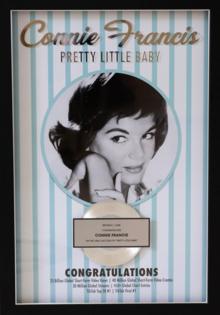
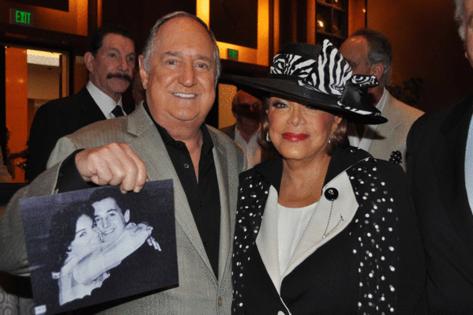
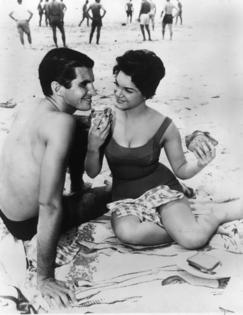
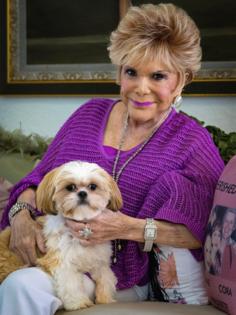




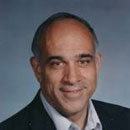
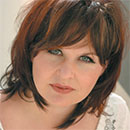

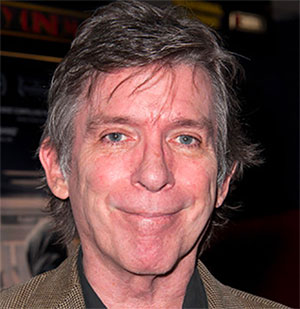


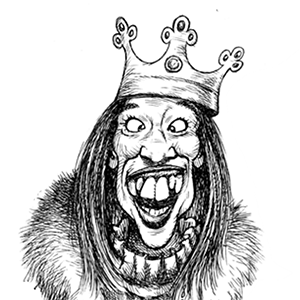





Comments